Last photo of Helen taken in 1982
The Hidden Youth of Helen Tappeiner Lossos
To return to the "Genealogy in St. Louis" Web Site click here.
Helen Tappeiner Lossos (aka "mom") was masterful in hiding the truth about her childhood. We never heard of her childhood friends, of neighborhood streets where she whiled away the hot days of her St. Louis summers. We never knew about her grade school activities, about teenage crushes. There were never any class pictures, or baby pictures, or, any pictures at all. Of course, she didn't really have to lie about all this because I can't once remember having directly asked her. She simply never told us about the parts of her life that she didn't want to remember.
Mom was born August 31, 1908, the daughter of Conrad Peer Tappeiner and his young bride, the former Philomena (Minnie) Marseiler. In order to understand the conditions under which mom came into this world, it's necessary to give a little background on her parents.
Minnie was born on May 28, 1881, in the small village of Schluderns, in the Tyrol area of the Austrian Alps, the daughter of Louis Marseiler and Filomena Rupp. Dave and Mary Lossos have visited this area twice (1993 and 1995). Even in this modern day you still awake to the sound of clanging cowbells from the nearby hillside pastures. On another hill above the village lies a castle. Minnie was a twin, her sister being Louisa. We know little of Minnie's youth, but we do know that her two sisters immigrated to the United States before she did. We can only assume how difficult it was for her parents to say goodbye forever to the last of their three daughters.

Minnie arrived at Ellis Island on April 22, 1902, aboard the SS Zeeland (1), having departed from Antwerp, Belgium. She was only twenty years old, and had twenty dollars in her pocketbook. Her last place of residence in Europe was Basch, Switzerland. It's unclear if she actually lived there, or if that was simply her last place of lodging before departure. At that time in American history, the large influx of immigrants dictated that only those in good health and capable of earning a living were allowed to settle here. When Minnie arrived on these shores, her two sisters were already ensconced in the United States. Yet, for some reason, Minnie claimed uncle "Fred Wachter in New Jersey" as her "final destination" (there was a Wachter family living in Schluderns, Austria, but no connection with the Marseilers has ever been determined). The years between her arrival and her marriage in St. Louis in 1907 are still a mystery.
According to the naturalization papers filled out by Minnie, "Coonie", as he was called, was born in Matsch, Austria (which is now part of Italy) on December 12, 1880. He was the fifth of five illegitimate children of Philomena Peer. Why she never married the father, Edward Tappeiner, we will probably never know. Conrad arrived in this country in 1902, although I've never discovered the actual immigration record. Matsch and Schluderns are only about a mile or so apart, which automatically leads one to believe that Conrad and Minnie knew each other before arriving in the U.S.
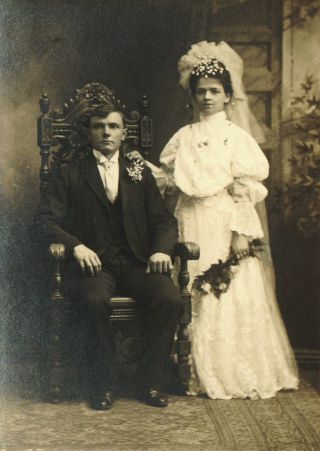
They married in St. Louis on November 15, 1907, by a Justice of the Peace. A mere nine months later mom was born, on August 31, 1908. At the time, they were living at 4501 Gravois (near the Bevo Mill). Mom was baptized in Holy Family Church (ironically close to where we all lived for so many years). Her godmother was her cousin, Anna Glinz. The following year Conrad and Minnie separated on October 11, 1909. We don't know for sure what transpired during mom's first year, but can certainly gain some insight from the divorce papers filed by Minnie. In them she tells the courts that Conrad was "in the habit of drinking intoxicating liquors, and was in the habit of coming home intoxicated, and when in this condition was extremely violent in his abuse" of her. Apparently the marriage was doomed from the beginning because Minnie goes on to say that Conrad struck her "with his fist" "four or five weeks after their marriage". Also, according to Minnie, Conrad showed no fatherly feelings and affection toward mom, and "on one occasion choked (Helen) in an attempt to suppress (her) crying". Even during the tumultuous first year of the marriage Minnie had to work as a servant to help make ends meet. Apparently Conrad, because of his drinking, was unable to hold down a job in spite of the fact that he was a trained carpenter. I'm convinced that Conrad was probably not the nicest guy, but probably far less a villain than the rhetoric of Minnie's lawyer made him out to be.
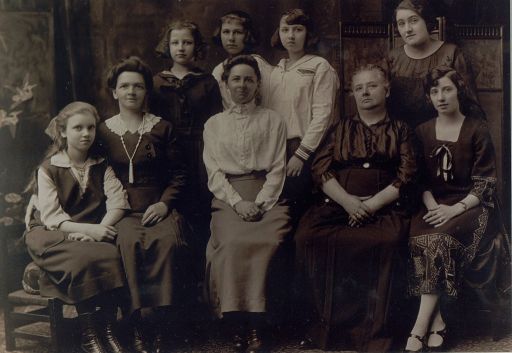
The courts granted the divorce in December of 1909. Mom was only 14 months old, and undoubtedly would not have remembered any of that time in her life. The court decreed that Conrad pay Minnie $25 per month in alimony. From what we understand Minnie seldom received it, and therefore was forced to look for work to support herself and mom. As far as I can tell, Minnie's older sister, Josephine, was quite settled, and already had two girls, aged ten and thirteen. In addition, Minnie's twin sister, Louisa, was also living in St. Louis, and had three daughters of her own. It's hard to understand how mom was confined to an orphanage here in St. Louis for nearly eighteen years with two aunts, both in stable marriages, in the same vicinity.
Minnie never remarried after her divorce from Conrad. I can find no trace of Minnie until 1913 when she was a live-in servant for a wealthy family in Jennings. The address was 2601 Hord Avenue, at the corner of Orchard Avenue. The family consisted of a Sophie Buss, and her sister Ottelie Rieckher, and Sophie's daughter, Emma Buss. It's quite possible that Minnie had been working there ever since her divorce, but just never showed up on any records (i.e., city directories). Minnie was still in their employ during the 1920 Federal Census.
Conrad remarried Anna B. Mueller (nee Klein). The time and place is still not determined, but he first shows up in the St. Louis County Directories in 1917 as a farmer living on Zeiss Avenue in Affton. It's possible that during that missing eight years he either was living elsewhere or not staying in one place long enough within the St. Louis area to show up in the Directories. Ironically, Anna Mueller had a daughter from a previous marriage.
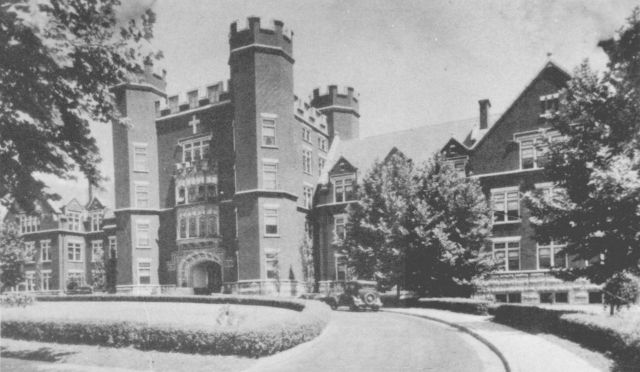
Regardless, we do have the record of mom's induction into St. Ann's Foundling Asylum and Widows' Home (2). The register shows that mom entered the asylum on November 6, 1909, less than a month after Conrad and Minnie separated (and before the divorce was even granted). She remained in the care of St. Ann's Home until September 5, 1913. As St. Ann's Home cared for boys and girls from birth to age five, she had reached the age limit for that facility. St. Ann's, at Page and Union was the building that mom first knew of as "home". The building no longer exists.
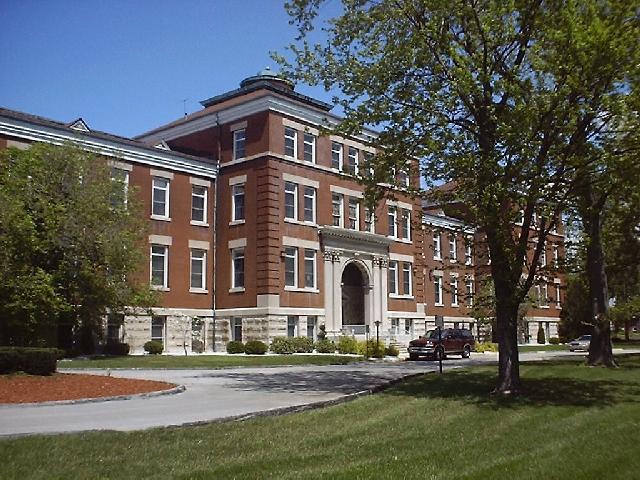
It appears that she may have spent a few days with Minnie at that point before entering St. Mary's Home. However, on September 14, 1913, at age five, never having known life outside of an orphanage, Minnie committed mom to another "home" that she was to be in for the next eleven years of her life. These eleven years are a complete blank relative to what events took place in mom's life. I've requested all information that pertained to mom during her confinement in both St. Ann's and St. Mary's. All the "Catholic Services for Children & Youth" organization could provide was a date in and a date out of each institution. No class pictures. No subjects taught. No sports activity. No piano recitals. No medical history. No picnics attended. Not a single shred of evidence of a young girl's growth from age one through age 16.

Minnie took mom out of St. Mary's Asylum (3) on August 2, 1924, and placed her, as a boarding student, at St. Elizabeth's Academy, on Arsenal Street. Mom's "Sweet Sixteen" birthday began the final portion of her youth, still within the confines of an institution. It should be noted here that the fate that befell most of mom's friends (namely Mary, Eleanor, Corine, Adele, and Rose) at St. Mary's were to be sent to St. Philomena's Industrial School on August 30, 1924. It would be interesting to talk to the descendants of those young girls, and see if they could share stories about life in St. Mary's. However, confidentiality forbids us from knowing the last names of these girls that mom grew up with. It's quite possible that she loved some of them (as sisters), and even possible that she hated some of them (as sisters). I've always marveled at the Catholic Church's stance regarding their records. "Honor thy father and thy mother, but don't dare ask us what their names were".
St. Philomena's was the proscribed institution for young orphan girls in the last phase of their youth to learn a trade. I'm sure mom looked at St. Elizabeth's as a marvelous alternative.
By the way, St. Mary's Girl's Orphan Asylum is no longer in existence. The building that mom knew as home for so many years is now the San Francisco Christian Assembly Multiplex Center. It is located at 5341 Emerson (a block away from Calvary Cemetery).
It's unclear when Minnie moved out of St. Louis, and found employment as the live-in housekeeper of Our Lady of Mt. Carmel Parish in Chicago, Illinois. We do know that she remained in this position for a long time.
Meanwhile, Conrad and his wife Anna, and Anna's daughter Susan, were living close to Grant's Farm in the early 1920s. Conrad never adopted Susan. Susan and Conrad didn't get along, and she left home when only 15. However, in 1923 Conrad and Anna adopted the four year old orphan son of Anna's sister. His name was Oscar. He took the Tappeiner name. I found Oscar in early 1982, and was able to have a "reunion" between him and mom. It was from Oscar that I first saw a photo of Conrad. Mom was like a giddy school girl when she met her "brother". This happened just months before mom's death in June of 1982.
Oscar was able to share some interesting stories of Conrad. Apparently Conrad, being a carpenter, worked at the construction of portions of the Busch estate on Grant's Farm. Oscar recalled that Conrad would sometimes play cards with Gussie Busch in the horse stables of the farm. He also gave some insight into the character of Conrad. For example, Oscar remembered once when he and Conrad were at a carwash when a black man jumped ahead of them in line. Conrad, tall (nearly six feet) and strong, got a rope and was in the last stages of lynching the guy when four men finally managed to stop him.
Another thing that I learned from Oscar was that the name Tappeiner was pronounced TA-PINER, not TAP-IN-ER as Minnie had always enunciated. Perhaps a subtle act of contempt by Minnie toward her former husband.
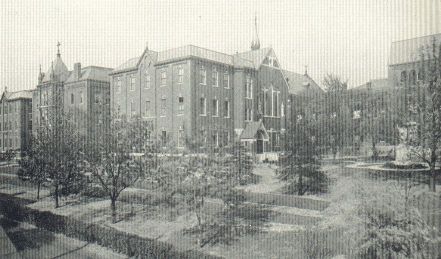
While all of this was happening, mom was settling into the new routine at St. Elizabeth's Academy. Mom spent all four years here as one of the "residents". About 17 of the 45 students in mom's 1928 graduating class were fellow boarding students. Sisters Innocentia and Laetitia were the prime "Mother" figures in mom's life at this time. St. Elizabeth Academy provided a firm foundation for their students in many aspects of life. Mom learned to play the piano here (one of the few things that came to light when she insisted Mary Ann learn to play). She was also a frequent contributor to the yearbook in her final year. That yearbook reflects the following "prophecy" for Helen Tappeiner: "(that) her captivating style of story-telling" is now useful in urging the youngsters to bed.". One can only imagine what the story was behind that comment.
It was also during her four years at St. Elizabeth that mom began a regular familial relationship with her cousin, Mrs. Anna Glinz Kendrick, the second daughter of Minnie's oldest sister, Josephine Marseiler Glinz. Anna's daughter Frances was only six years younger than mom. John Kendrick, Anna's husband, would drive down to St. Elizabeth's nearly every weekend to pick up mom for a visit.
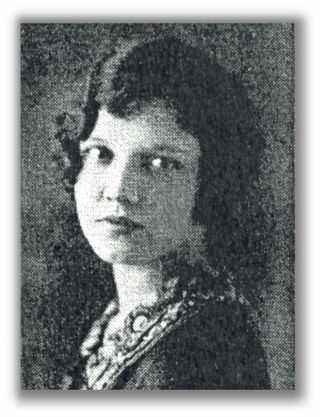
The 1927 St. Elizabeth Academy yearbook shows mom as a Junior. It also points out that she was a member of the Glee Club, as well as the Spanish Club. Even more astonishing was the fact that she was on the Basketball team. But the best revelation within this yearbook was the photo that truly captures what a beautiful young lady she was becoming.
The 1928 St. Elizabeth Academy Senior Yearbook also gives us a nice time-line of events that mom experienced in 1927 and 1928. For example, the infamous September 29, 1927 tornado, that killed 86, injured 500, and lay waste to six square miles of buildings, inflicted limited damage to the school mom called home. October 12th was a field day to nearby Tower Grove Park to celebrate Columbus Day. October 19th the girls got off to attend the Veiled Prophet Parade. December 16th mom and the rest of the seniors got a tour of the brand new gymnasium. February 21, 1928 was a double-header for mom. In the morning she attended a lecture entitled "What Catholic Women can Accomplish in the World". That afternoon she helped the boarding seniors defeat the boarding juniors in a basketball game in the new gym.
It is at this point that mom's life changed dramatically forever. Her father, Conrad, was at this time living on Rock Hill in Webster Groves, and running a "private" speak-easy in his basement. He lived there with his wife Anna, their adopted son Oscar, and Anna's daughter Susan. About 10:30 PM on the evening of April 15th, four men and two women came into Conrad's home and later left in an angry mood as he refused to sell them drinks. They returned an hour later and one of them shot Conrad at point blank range with a sawed-off shotgun. Conrad did not die immediately, in spite of sustaining nine slugs in his right side and hip. He was conveyed in his own car by a neighbor to St. Anthony's Hospital on Grand Avenue in the City. According to Oscar Tappeiner, the adopted son of Conrad, the pocket watch Conrad had on him the night of the shooting stopped at least one of the slugs. Oscar was asleep in the house at the time.
The following day, John Kendrick picked mom up from school, and took her to visit her father at St. Anthony's before he died on April 18th. He was cremated at the Missouri Crematory. We will never know how often Conrad and his daughter were able to have gotten together during her youth, or if possibly a meaningful relationship would have developed as mom was about to enter adulthood. Conrad died with nearly nothing to his name (the St. Louis County probate valued his estate as less than $1000).
As an aside, Conrad's murderer was able to threaten the witnesses into not testifying against him, and got away with murder. I spoke with his son in 1997. He was completely unaware of the murder of Conrad Tappeiner, and the arrest and indictment of his father as the murderer. He even mentioned that his father at one time was a policeman.
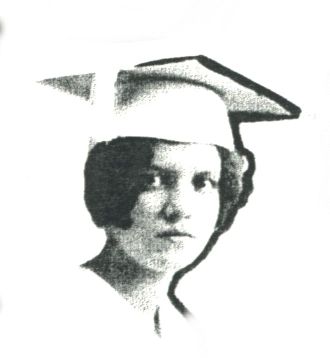
Mom then returned to the daily regiment of life at St. Elizabeth's. The seniors attended a play at Fontbonne on April 21st . In late May mom participated in the school play called "The Making of Miss 1928". Mom played the part of a mannequin. On May 16th mom attended a tea at Webster College. June 2nd was a Farewell Party at the Mayfair Hotel, followed on June 6th by a luncheon on the roof of the Hotel Chase. Finally, on June 11, 1928, mom ended nearly 19 years of imposed "incarceration" when she graduated from high school and started her life as an adult.
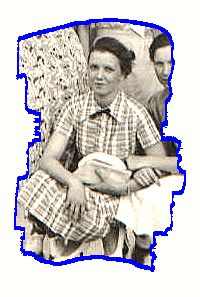
We know that mom lived with the Kendricks at 2914 Hebert, and assume that she probably did so directly after leaving St. Elizabeth Academy in June of 1928. She was nearly twenty years old, and a stunning beauty. She was immediately employed as a stenographer. She began dating, and quickly captured the eye of a young man. The two became engaged. A date for the wedding was set, and an engagement party was given. However, apparently the young man was quite possessive of mom, along with being a non-Catholic (which back then was unheard of for a devout Catholic girl), and mom broke off the relationship.
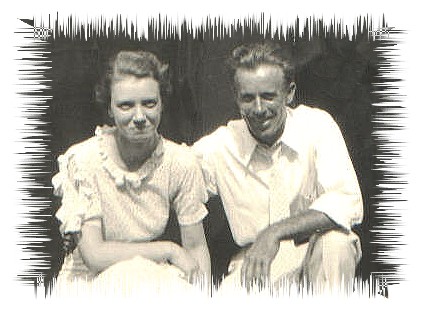
Mom went to work at J. C. Penney's. One day, while waiting for the bus in front of the Texaco Service Station just a few houses down from her home on Hebert, mom struck up a conversation with the owner. They began dating, and made quite a striking couple. Ed Lossos was nine years older than her, and still lived at home with his father and sister. His mother had passed away that year (1930). He felt an obligation to care for his father, who was 68 at the time. They continued to date, and finally in 1933 decided to marry. For whatever reason, they choose to keep their marriage a secret from his family, and rather than being married in her parish or his, traveled to Mattese, Missouri to be married at Assumption Catholic Church. On the way back to the city to tell his family, they stopped at Al Smith's Restaurant at the corner of Meramec and Grand for a "wedding dinner". When his sister Margaret was told of the marriage she went to the pastor of St. Henry's to verify that it was indeed fact. Ed and Helen lived with his father and sister at 2901 Lasalle for about a year before moving out to their first home together, an upstairs flat on Folsom Avenue.
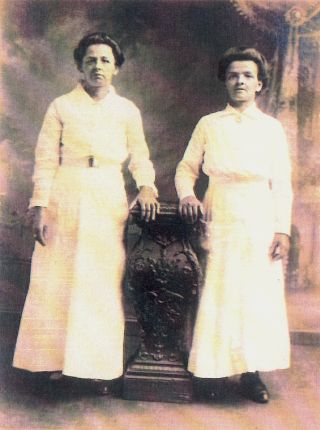
In a conversation I had with Frances Kendrick Monroe before her death on 1989, she mentioned that the reason the Lossos family and the family of Minnie's oldest sister (Josephine) didn't get together very much was that Frances' mother (Anna Kendrick) and Ed Lossos had a falling out. Ironically, Frances also mentioned that her family had no relationship with Minnie and Josephine's other sister, Louisa, and her family. Essentially, we had three sisters from a tiny village in Austria all come to live in St. Louis, Missouri, and ignore one another.
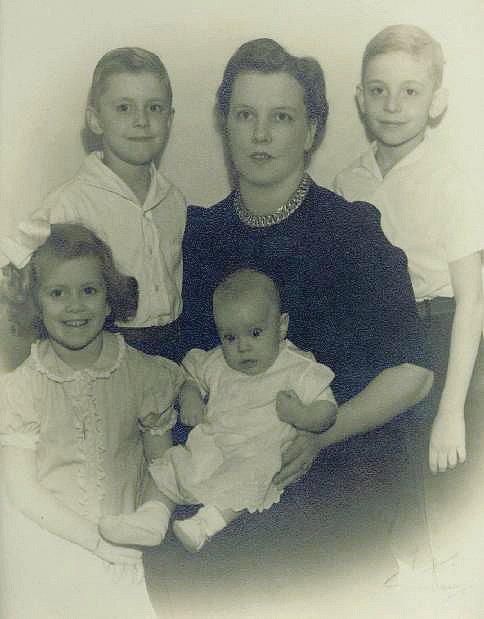
Equally astonishing was the fact that when Mary and I visited the village of Schluderns for the second time in 1995, we found that this Marseiler family was still living in the region. The reason was that although the three girls in the family emigrated to the United States, their three brothers remained in Austria. Another piece of information that had never been told by Minnie or mom. (Written by Dave Lossos on August 31, 2002 (Mom's Birthday))
1. The steamship Zeeland was commissioned by the Red Star Line in Liverpool, England. SS Zeeland had accommodations for 342 first class passengers, 194 second class, and 626 steerage.
2. (From Encyclopedia of the History of St. Louis, a Compendium of History and Biography for Ready Reference (1899), was edited by William Hyde and Howard L. Conard, pages 1949-50). The sisters receive annually about three hundred and fifty infants; these are of both sexes, their ages ranging from one day to five years. Among them are orphans, half-orphans and foundlings. Each child is given a name and a number and its history is recorded for future identification. It is then placed in the nursery under the care of the sister's and the nurses. At the age of three years they are transferred to the play-room, where the older children attend the kindergarten. In 1910 the building at Page and Union Boulevards was built (this is the one mom resided in).
3. (From Encyclopedia of the History of St. Louis, a Compendium of History and Biography for Ready Reference (1899), was edited by William Hyde and Howard L. Conard, pages 1975-76). St. Mary's Asylum maintains and educates orphan or homeless girls from the age of four to fourteen years. Two hundred and fifty girls are sheltered and instructed in common branches of education and vocal music, besides which they are taught to sew, cook, wash and hear a part in all the duties of the household. Those remaining in the asylum are, at the age of twelve or fourteen, either put out to service or transferred to St. Philomena's Industrial School, where they are taught dressmaking and other trades.